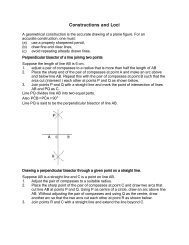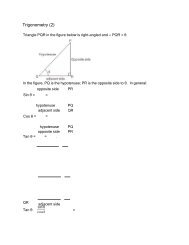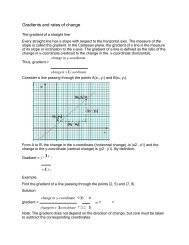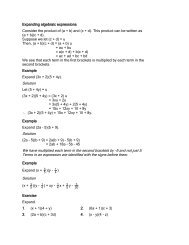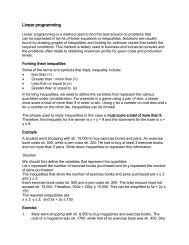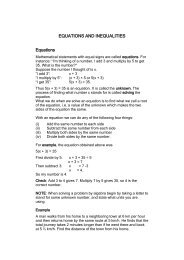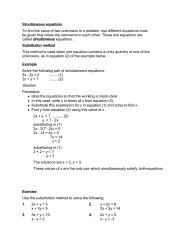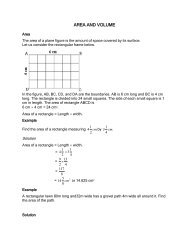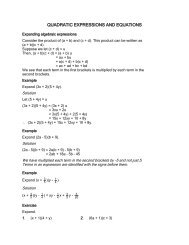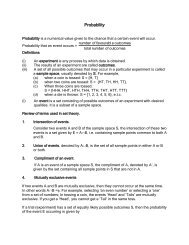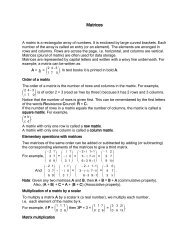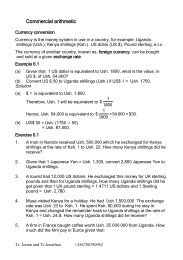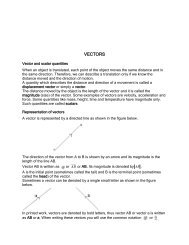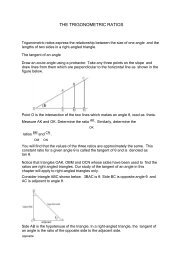J20
You also want an ePaper? Increase the reach of your titles
YUMPU automatically turns print PDFs into web optimized ePapers that Google loves.
0 <br />
Column represents I<br />
1<br />
(the image of I).<br />
1<br />
1<br />
<br />
Column represents J 1 (the image of J)<br />
0<br />
Draw I, J, I 1 and J 1 on a diagram. Clearly both I and J have been rotated 90 0 clockwise<br />
about the origin.<br />
0 1 <br />
represents a rotation of -90 0 about the origin.<br />
1<br />
0<br />
This method can be used to describe a reflection, rotation, enlargement, shear or stretch<br />
in which the origin remains fixed.<br />
Exercise<br />
1. Triangle XYZ has vertices X(1, 1), Y(2, 4) and Z(4, 4). Determine the matrix which<br />
represents each of the following transformations and hence the coordinates of the<br />
vertices of the image triangle X 1 Y 1 Z 1 .<br />
(a) Reflection in the x-axis<br />
(b)<br />
(c)<br />
(d)<br />
(e)<br />
Reflection in the y-axis.<br />
A rotation of -90 0 about the origin.<br />
A rotation of 90 0 about the origin.<br />
A half turn about the origin.<br />
(f) An enlargement of scale factor -2 with centre O.<br />
2. Determine the matrix that can transform each of the following pairs of points onto<br />
their respective images.<br />
(a) A(1, 2) and B(3, 0) onto A1(4, 4) and B1(3, 9).<br />
(b) A(-2, 1) and B(5, -3) onto A1(1, -2) and B1(1(-3, 5)<br />
(c) M(4, 5) and N(-1, 6) onto M1(-4, 5) and N1(1, 6)<br />
(d)<br />
P(8, 3) and Q(0, 5) onto P1(8, 3) and Q1(0,5)<br />
3. Determine the matrix that can transform each of the following shapes onto their<br />
corresponding images.



